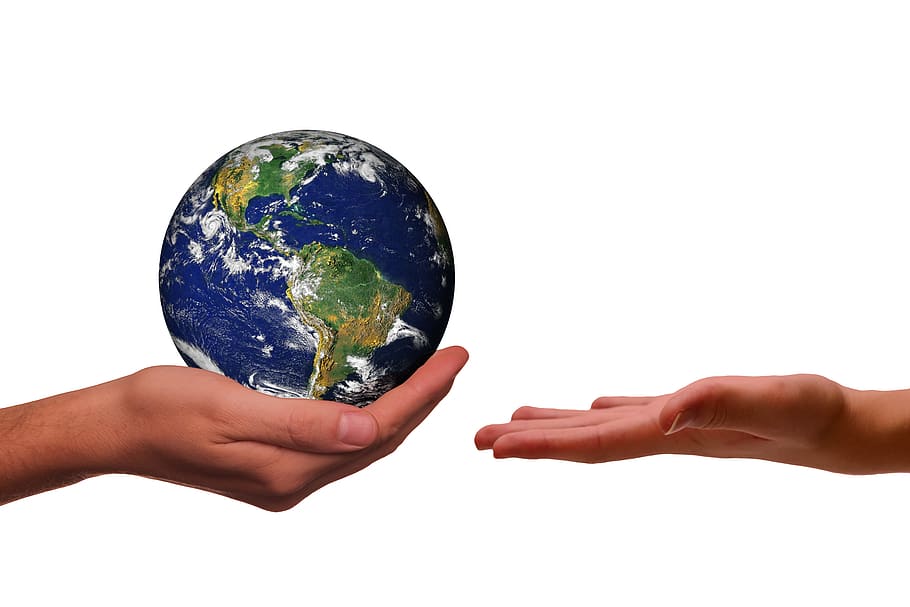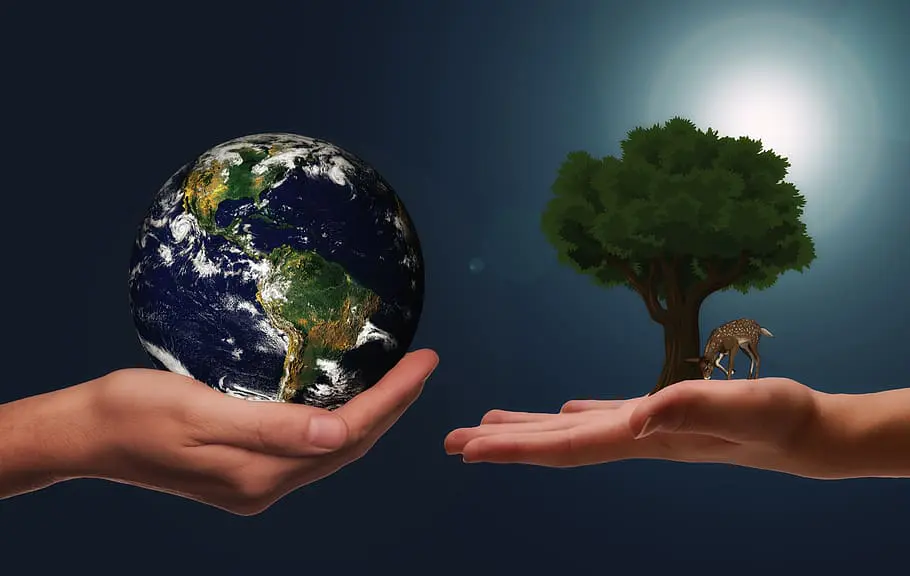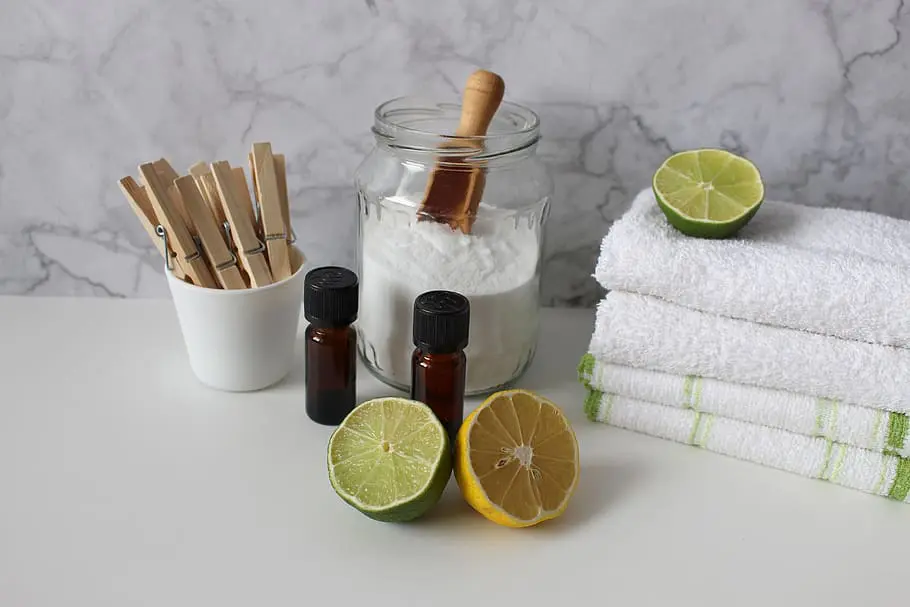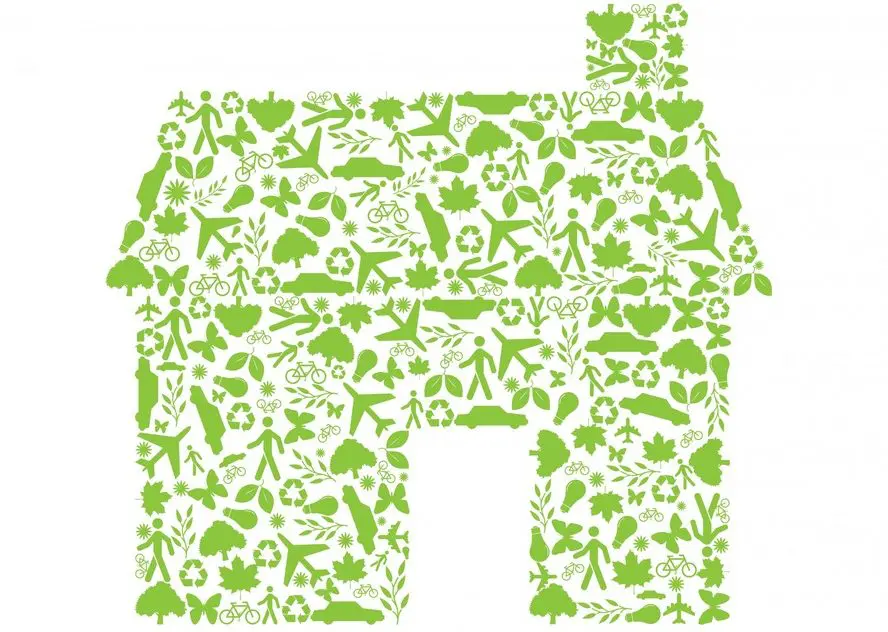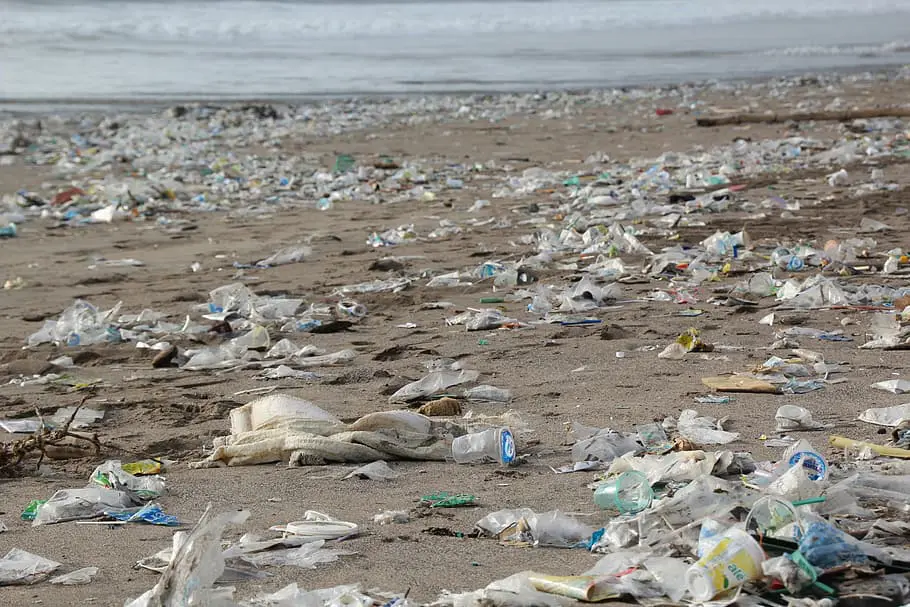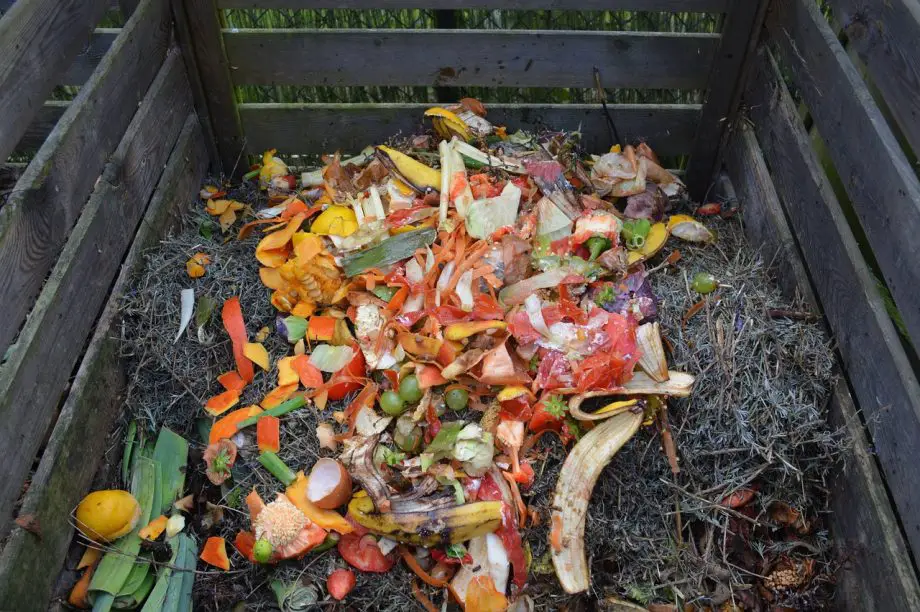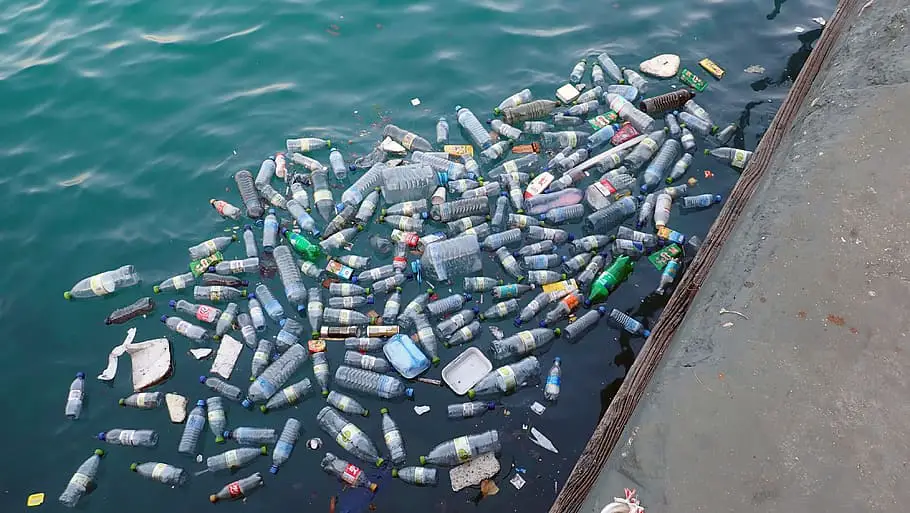 Discover sustainable alternatives to single-use plastics in our comprehensive guide. Learn about eco-friendly options that are kind to our planet. Join us!
Discover sustainable alternatives to single-use plastics in our comprehensive guide. Learn about eco-friendly options that are kind to our planet. Join us!
Are you tired of the guilt that comes with every plastic bag you use? Well, you’re not alone.
The good news is that sustainable alternatives to single-use plastics are not only available, but they’re also practical, affordable, and kinder to our beautiful planet.
In this blog post, we’ll explore these alternatives, helping you make choices that are better for you and the world around us.
So, let’s dive in and start making a difference, one reusable item at a time!
Sustainable Alternatives to Single-Use Plastics
Welcome to our journey into the world of sustainable alternatives to single-use plastics!
It’s no secret that our reliance on single-use plastics has taken a toll on our environment.
But don’t worry, this post isn’t about doom and gloom. Instead, we’re going to explore the exciting and innovative alternatives that are making a real difference.
From reusable bags to biodegradable plates, we’ll delve into the options that are not only better for our planet but also practical for our everyday lives.
We’ll also tackle the challenges these alternatives face and discuss how each of us, including businesses and governments, can play a role in this important shift.
So, are you ready to embark on this eco-friendly adventure with us?
The Problem with Single-Use Plastics
Let’s start by addressing the elephant in the room, single-use plastics. These are the fossil fuel-based plastic items we use once and then toss away without a second thought.
Think plastic bags, straws, coffee cup lids, water bottles – the list goes on. The problem is, these items don’t just disappear.
Instead, they end up in our landfills, our oceans, and even our food chain. Y
es, you heard that right. Tiny particles of plastic, known as microplastics, have been found in everything from seafood to table salt.
Not to mention, the production of these plastics releases harmful greenhouse gases, contributing to climate change. It’s a grim picture, isn’t it?
The Need for Sustainable Alternatives
But here’s where the ray of hope shines through as sustainable alternatives to single-use plastics.
These are products designed to be reused over and over again, or materials that can break down naturally without harming the environment.
The need for these alternatives has never been more urgent. By choosing reusable shopping bags, water bottles, or straws, we can significantly reduce the amount of plastic waste we produce.
And by opting for biodegradable or compostable products, we can ensure that even when we do have to throw something away, it won’t linger in the environment for hundreds of years.
The transition to these alternatives isn’t just a nice idea – it’s a necessity for the health of our planet and future generations.
So, let’s explore these sustainable alternatives and how we can incorporate them into our lives.
The Impact of Single-Use Plastics
Before we dive into the world of sustainable alternatives, let’s take a moment to understand why this shift is so crucial.
The impact of single-use plastics is far-reaching and affects us all, whether we realize it or not.
It’s not just about litter in our parks or plastic bags stuck in trees.
It’s about the health of our oceans, the safety of our wildlife, and the future of our planet.
So, let’s pull back the curtain and take a closer look at the real impact of single-use plastics.
It might be a bit uncomfortable, but it’s a necessary step in our journey towards a more sustainable lifestyle.
Environmental Consequences
First up, let’s talk about the environmental consequences of single-use plastics.
You’ve probably seen those heartbreaking images of sea turtles entangled in plastic waste or birds with stomachs full of plastic debris.
These are not isolated incidents. Over 8 million tons of plastic end up in our oceans each year, causing harm to marine life and disrupting delicate ecosystems.
But it’s not just our oceans that are suffering. Plastic waste in landfills can take up to 1,000 years to decompose, releasing harmful chemicals into the soil and groundwater.
Plus, the production and disposal of plastic contribute to greenhouse gas emissions, accelerating climate change.
It’s clear that our planet pays a high price for our convenience.
Health Implications
Now, let’s move on to the health implications. You might be thinking, I’m not a sea turtle, so why should I worry?
Well, the truth is, the plastic problem affects human health too. Microplastics, tiny particles of plastic less than 5mm in size, have been found in our food, our water, and even the air we breathe.
While the full impact of microplastics on human health is still being studied, early research suggests potential links to a range of health issues, including hormonal disruption and cancer.
Plus, the toxins released by plastic production and decomposition can contaminate our air and water, leading to a range of health problems.
So, it’s not just about saving the turtles (as important as that is) but it’s about protecting our health and the health of future generations.
Understanding Sustainable Alternatives
Now that we’ve explored the problems with single-use plastics, it’s time to turn our attention to the solutions.
Enter sustainable alternatives. These are the heroes of our story, ready to step in and save the day. But what exactly are these alternatives?
How do they work, and why are they so important? In this section, we’re going to demystify sustainable alternatives, giving you all the information you need to make informed, eco-friendly choices.
So, let’s roll up our sleeves and get to know these sustainable superheroes a little better!
Definition and Importance
So, what exactly are sustainable alternatives to single-use plastics?
In simple terms, these are products or materials that can be used in place of single-use plastics, with a lesser environmental impact.
They might be items designed for long-term use, like a sturdy reusable shopping bag or a stainless steel water bottle.
Or they could be products made from materials that are biodegradable or compostable, meaning they break down naturally over time without leaving harmful residues.
The importance of these alternatives cannot be overstated.
By choosing sustainable alternatives, we can drastically reduce the amount of plastic waste we generate, lessen our contribution to greenhouse gas emissions, and help protect our planet’s ecosystems.
It’s a powerful way to make a difference.
Factors to Consider When Choosing Alternatives
Choosing sustainable alternatives isn’t just about ditching plastic.
It’s about making mindful choices that align with our values and our lifestyle. Here are a few factors to consider:
Reusability: Can the item be used multiple times, reducing the need for disposable products?
Material: Is the item made from materials that are biodegradable, compostable, or recyclable?
Life Cycle: What is the environmental impact of the item throughout its life cycle, from production to disposal?
Practicality: Is the item practical and convenient for your lifestyle?
Cost: While some sustainable alternatives may be more expensive upfront, they can often save money in the long run.
Remember, there’s no one-size-fits-all solution. The best sustainable alternative for you will depend on your individual needs and circumstances.
But every small change can make a big difference. So, let’s explore some of these alternatives and see how they can fit into our lives.
Detailed Overview of Sustainable Alternatives
Alright, now that we’ve set the stage, it’s time to meet the stars of the show – the sustainable alternatives to single-use plastics.
These are the everyday heroes that are stepping up to tackle the plastic problem, one reusable item at a time.
From your morning coffee to your weekly grocery run, there are sustainable alternatives for almost every single-use plastic item in your life.
So, let’s take a closer look at these alternatives, how they work, and how they can help us reduce our plastic footprint.
Ready to discover your new favorite eco-friendly products? Let’s dive in!
Reusable Bags: Alternatives to Plastic Shopping Bags
Let’s start with one of the most common single-use plastics – shopping bags.
Maybe you remember getting paper bags at the grocery store before plastic bags became the norm. True they were single-use products but at least they decomposed easily.
Enter their sustainable counterpart: reusable bags. Made from materials like cotton, jute, or recycled PET, these bags can be used again and again for your grocery runs, reducing the need for single-use plastic bags.
Plus, these eco-friendly alternatives are often stronger and more durable, so no more worrying about your bag breaking on the way home!
Reusable Water Bottles: Alternatives to Plastic Water Bottles
Next up, let’s tackle plastic water bottles. The sustainable alternative? Reusable water bottles.
Available in materials like stainless steel, glass bottles, or BPA-free plastic, these bottles can be refilled countless times, helping you stay hydrated without the plastic waste.
Plus, many come with insulation features to keep your drinks cool or hot for hours.
Reusable Straws: Alternatives to Plastic Straws
Years ago paper straws were common and were replaced by plastics. Say goodbye to plastic straws and hello to their reusable alternatives.
From stainless steel straws to silicone to bamboo, there’s a reusable straw for every preference.
They’re perfect for sipping your favorite drinks at home or on the go, and many come with their own cleaning brush for easy maintenance.
Compostable Cutlery: Alternatives to Plastic Cutlery
For those times when reusable isn’t an option, compostable cutlery is a great alternative to plastic.
Made from materials like bamboo, wood, or plant-based plastics, these utensils can be composted after use, reducing their environmental impact.
Reusable Coffee Cups: Alternatives to Disposable Coffee Cups
Love your daily coffee but hate the waste? Reusable coffee cups are here to save the day and replace plastic cups.
With options ranging from insulated stainless steel to lightweight bamboo, you can enjoy your coffee guilt-free.
Some coffee shops even offer discounts for bringing your own cup!
Reusable Containers: Alternatives to Plastic Containers
Whether it’s for storing leftovers or packing a lunch, reusable containers are a fantastic alternative to single-use plastic containers.
Glass, stainless steel, or BPA-free plastic options are available, offering a more sustainable way to store and transport food.
Biodegradable Plates: Alternatives to Plastic Plates
For parties or picnics where disposable is more practical, biodegradable plates are a great alternative to plastic.
Made from materials like bamboo, palm leaves, or sugarcane, these plates can be composted after use, leaving no trace behind.
Other Alternatives: Mention Other Alternatives Like Bamboo Toothbrushes, Beeswax Wraps, etc.
And the list doesn’t stop there. From bamboo toothbrushes to beeswax wraps for food storage, there are sustainable alternatives for almost every single-use plastic item you can think of.
It’s all about finding the options that work best for you and making the switch one step at a time.
What Is BPA-Free Plastic And Should You Use It?
BPA, or Bisphenol A, is a chemical that’s often used in the production of certain types of plastic, including polycarbonate plastics and epoxy resins.
These types of plastics are commonly used in containers that store food and beverages, such as water bottles, as well as other consumer goods.
BPA has been the subject of controversy because it can leach out of plastic containers into the food or drink they’re holding, especially when the container is heated.
Some research has suggested that BPA exposure can have a range of health effects, including hormone disruption.
BPA-free plastic is plastic that has been made without the use of Bisphenol A.
This term is often used to market plastic products that are intended to be safer or healthier than those that contain BPA.
However, it’s important to note that just because plastic is BPA-free doesn’t necessarily mean it’s completely safe.
Some BPA-free plastics use substitutes that may have similar health effects to BPA.
Additionally, all plastics, whether BPA-free or not, have an environmental impact due to their production and disposal.
Therefore, while BPA-free plastics may be a better choice than plastics containing BPA.
But the most sustainable and health-conscious choice is often to reduce plastic use overall.
This can be done by using alternatives like glass, stainless steel, or other reusable materials whenever possible.
Do they break down?
BPA-free plastics, like other types of plastic, do not biodegrade in a meaningful way.
This means they won’t break down naturally in the environment into harmless materials.
Instead, over time, they can break up into smaller and smaller pieces, eventually becoming microplastics.
These tiny plastic particles can cause environmental harm, including pollution of waterways and harm to wildlife.
Even when disposed of properly in a landfill, plastics can take hundreds to thousands of years to decompose, and they can still leach harmful chemicals into the soil and groundwater during this process.
Some BPA-free plastics are marketed as biodegradable or compostable, but it’s important to note that these terms can be misleading.
Most biodegradable or compostable plastics require very specific industrial composting conditions to break down, and they won’t decompose in a home compost pile or in nature.
Furthermore, even under ideal conditions, these plastics can take several years to decompose, and they may still leave behind microplastics or other residues.
Therefore, while BPA-free plastics may be a better choice than BPA-containing plastics from a health perspective, they still present significant environmental challenges.
The most sustainable choice is to reduce plastic use overall and choose reusable or truly compostable alternatives whenever possible.
The Challenges and Limitations of Sustainable Alternatives
As much as we’d love to say that sustainable alternatives are the magic solution to our plastic problem, it’s important to acknowledge that they come with their own set of challenges and limitations.
Just like any other solution, they’re not perfect. But don’t let that discourage you!
Understanding these challenges is the first step towards overcoming them and making sustainable alternatives more accessible and effective.
In this section, we’ll take an honest look at the hurdles we face in our journey toward a more sustainable lifestyle.
So, let’s dive in and tackle these challenges head-on!
Discuss the Challenges in Production, Usage, and Disposal of Alternatives
While sustainable alternatives are a step in the right direction, they do come with their own set of challenges. Let’s break them down:
Production: The production of sustainable alternatives can sometimes be resource-intensive.
For example, cotton tote bags need to be used many times before their environmental impact is lower than that of single-use plastic bags.
Usage: Some sustainable alternatives require a change in habits, which can be a barrier for some people.
For example, remembering to bring your reusable shopping bags or coffee cup can take some getting used to.
Disposal: Not all sustainable alternatives are created equal when it comes to disposal.
Some items labeled as ‘biodegradable’ or ‘compostable’ require specific conditions to break down, and if not disposed of correctly, they can still cause environmental harm.
Discuss the Limitations and Misconceptions about Alternatives
There are also several limitations and misconceptions about sustainable alternatives that need to be addressed:
Biodegradable Misconceptions: Many people believe that ‘biodegradable’ means an item will break down quickly and harmlessly in any environment.
However, as mentioned earlier, many biodegradable items require specific conditions to decompose effectively.
Accessibility and Cost: Sustainable alternatives are often more expensive than their plastic counterparts, which can be a barrier for many people.
Additionally, they may not be as readily available in all areas or for all products.
Not a Complete Solution: While sustainable alternatives are part of the solution, they won’t solve the plastic pollution problem on their own.
We also need systemic changes, including improved waste management systems, regulations, and a shift towards a circular economy.
Remember, understanding these challenges and limitations doesn’t mean sustainable alternatives aren’t worth pursuing.
Instead, it highlights the areas where we need to focus our efforts to make these alternatives more effective and accessible.
The Role of Individuals, Businesses, and Governments
As we navigate our way toward a more sustainable future, it’s important to remember that we’re all in this together.
The shift away from single-use plastics isn’t just about individual choices.
It’s a collective effort that involves individuals, businesses, and governments.
Each of us has a unique role to play and a unique opportunity to make a difference.
In this section, we’ll explore these roles in more detail, shedding light on how each of us can contribute to the solution.
So, whether you’re an individual looking to reduce your plastic footprint, a business owner seeking to make your operations more sustainable, or a policymaker aiming to enact change on a larger scale, this section is for you.
Let’s dive in and discover how we can work together to tackle the plastic problem!
How Individuals Can Make a Difference
As individuals, we have more power than we might think.
Every time we choose a reusable bag over a plastic one or a stainless steel water bottle over a disposable one, we’re making a difference.
Here are a few ways individuals can contribute:
Make Sustainable Choices: Opt for sustainable alternatives whenever possible. This could mean bringing your own coffee cup to the cafe, using a reusable water bottle, or choosing products with less packaging.
Educate Yourself and Others: Learn about the impact of single-use plastics and the benefits of sustainable alternatives, and share this knowledge with others. The more people know, the more they can make informed choices.
Support Eco-Friendly Businesses: Choose to buy from businesses that prioritize sustainability. Your purchasing power can encourage more businesses to do the same.
The Responsibility of Businesses
Businesses play a crucial role in the shift towards sustainable alternatives.
They have the power to make significant changes in the way products are designed, packaged, and delivered.
Here’s how businesses can contribute:
Offer Sustainable Products: Businesses can choose to offer more sustainable alternatives to single-use items, such as compostable cutlery or reusable containers.
Improve Packaging: Businesses can reduce the amount of plastic used in packaging, or opt for more sustainable packaging materials.
Implement Sustainable Practices: Businesses can implement practices like recycling programs, or incentives for customers who bring their own bags or cups.
The Role of Government Regulations
Government regulations can also play a significant role in reducing single-use plastics.
By implementing and enforcing laws that limit plastic use, governments can drive large-scale change.
Here are a few ways governments can contribute:
Ban or Limit Single-Use Plastics: Many governments around the world have implemented bans or limitations on single-use plastics, encouraging the use of sustainable alternatives.
Implement Recycling Programs: Governments can implement or improve recycling programs to manage plastic waste more effectively.
Encourage Sustainable Practices: Governments can provide incentives for businesses to adopt more sustainable practices, or for individuals to use sustainable alternatives.
Remember, every action counts.
Whether you’re an individual, a business owner, or a government official, you have the power to make a difference in the fight against single-use plastics.
Sustainable Alternatives To Single-Use Plastics FAQs
We know that this journey towards a more sustainable lifestyle can bring up a lot of questions. And that’s a good thing! Asking questions is how we learn and grow.
That’s why we’ve put together this FAQ section, to address some of the most common queries about sustainable alternatives to single-use plastics.
So, if you’ve been wondering about how to ensure the sustainability of alternatives, or how to reduce your own plastic use, you’re in the right place. Let’s dive into these questions and shed some light on the answers!
Q: What are some sustainable alternatives to single-use plastic?
A: There are many sustainable alternatives to single-use plastics.
These include reusable shopping bags, water bottles, and coffee cups; compostable or reusable cutlery and plates; and items made from more sustainable materials, like bamboo toothbrushes or beeswax wraps.
The best alternative for you will depend on your individual needs and circumstances.
Q: What is a sustainable alternative to the use of plastic in a plastic-free world?
A: In a plastic-free world, we would rely on materials that are either reusable or can break down naturally without causing environmental harm.
This could include glass, metal, wood, and certain types of biodegradable or compostable materials.
We would also likely see more innovative solutions, like edible cutlery, or packaging made from seaweed or mushroom mycelium.
Q: How can we ensure sustainable alternatives to plastic?
A: Ensuring sustainable alternatives to plastic involves both individual and collective action.
As individuals, we can choose to use sustainable alternatives and support businesses that offer these options.
Businesses can choose to produce and sell more sustainable products.
And governments can implement regulations that encourage the use of sustainable alternatives and manage waste effectively.
Q: How can people reduce single-use plastic?
A: There are many ways to reduce single-use plastic.
This can include using reusable shopping bags, water bottles, and coffee cups; avoiding products with excessive plastic packaging; choosing products made from more sustainable materials; and recycling whenever possible.
Every small change can make a big difference!
Single-use plastics are a large contributor to climate change. Thankfully, there are some ways to control this problem: sustainable alternatives to single-use plastic.
Sustainable Alternatives To Single-Use Plastics Final Thoughts
As we come to the end of our journey exploring sustainable alternatives to single-use plastics, it’s time to reflect on what we’ve learned and look ahead to the future.
It’s clear that the shift away from single-use plastics is not just a trend, but a necessity.
And while the road may be challenging, it’s also filled with opportunities to make a real difference.
In this conclusion, we’ll recap the importance of sustainable alternatives and leave you with a call to action.
Because remember, every step we take towards a more sustainable lifestyle is a step towards a healthier planet.
So, let’s wrap things up and get ready to make a difference!
Recap of the Importance of Sustainable Alternatives
As we’ve explored throughout this post, the importance of sustainable alternatives to single-use plastics cannot be overstated.
These alternatives offer a way to reduce our plastic footprint, lessen our contribution to greenhouse gas emissions, and protect our planet’s ecosystems.
From reusable bags and water bottles to compostable cutlery and plates, each alternative represents a step towards a more sustainable future.
But it’s not just about the environment. It’s also about our health, as reducing plastic use can help limit our exposure to potentially harmful chemicals.
So, while the shift to sustainable alternatives may require some changes in our habits, the benefits are well worth the effort.
Call to Action for Readers
Now, it’s over to you. Armed with this knowledge, you have the power to make a difference.
Start small, perhaps by swapping out your plastic shopping bags for reusable ones, or by choosing a reusable water bottle over disposable ones.
Support businesses that prioritize sustainability, and encourage others to do the same.
And remember, every change, no matter how small, contributes to a larger impact.
So, let’s take this journey together, one sustainable choice at a time, and work towards a future where single-use plastics are a thing of the past.
Are you ready to make a difference? Let’s get started!

